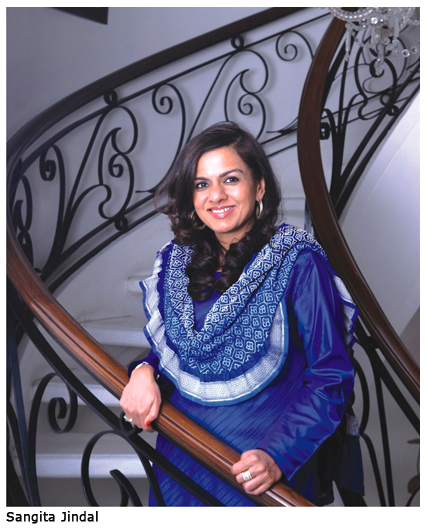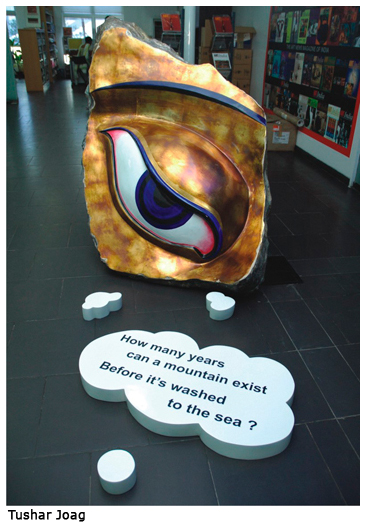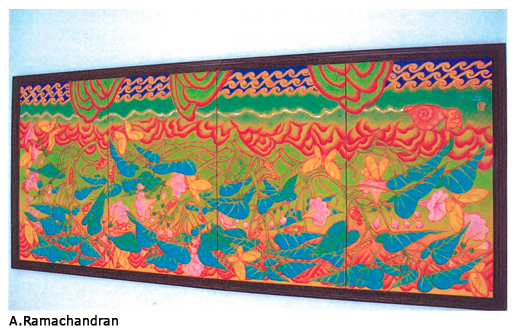- Publisher's Note
- Editorial
- In Conversation with Kanishka Raja
- Definitional Lack in an Inclusive World: Cutting Edge as Responsible Art
- Democratization Through Cutting Edge Art
- Mumbai for Cutting Edge
- Moments in Time (And a Little While After)
- In Transition
- Tip of Our Times
- Srishti School of Art, Design and Technology – A Cradle for Creative Excellence
- Cutting the Edges of Architecture
- Overview Cutting Edge
- The Matter Within: New Contemporary Art of India Featuring Photography, Sculpture and Video
- Generation in Transition: New Art from India
- Indian Master Painters at India Art Festival
- Life, Luxury & the Avant-Garde
- Mother India: The Goddess in Indian Painting
- The Last Harvest: Paintings of Rabindranath Tagore
- Asia Society Museum Presents Exhibition of Rabindranath Tagore's Paintings and Drawings
- Stieglitz and his Artists: Matisse to O'Keeffee
- Beauty of Unguarded Moments
- Across Times, Across Borders: A Report on the Chinese Art Exhibition
- A Summer in Paris
- Random Strokes
- The Emperor’s New Clothes and What It Really Means
- Understanding Versus Adulation
- What Happened and What’s Forthcoming
- Occupy Wall Street, The New Economic Depression And Populist Art
- Unconventional with Witty Undertones
- Narratives of Common Life and Allegorical Tales In Traditional and Modern Forms the Best of Kalighat 'Pats'
- Colours of the Desert
- Unbound
- I Am Here, An Exhibition of Video Self Portraits at Jaaga
- Staging Selves: Power, Performativity & Portraiture
- Venice Biennale Outreach Programme A Circle of Making I and II
- Cartography of Narratives, Contemplations on Time
- Joseph Kosuth: The Mind's Image of Itself #3' A Play of Architecture and the Mind
- Maharaja: Reminiscing the Glorious Past
- Art from Thirteen Asian Nations
- Tibetan Arms and Armor at Metrpolitan Museum of Art
- The Art of Poster Advertisement
- Unusual Angles and Facets of Museum Buildings
- Elegant Fantasies
- Art Collection and Initiatives
- Art Events Kolkata
- Mumbai Art Sighting
- Art Bengaluru
- Musings from Chennai
- Preview
- In the News
ART news & views
Art Collection and Initiatives
Volume: 4 Issue No: 22 Month: 11 Year: 2011
Corporate Corner
by Jasmine Shah Varma
 If a list of most powerful people in the world of Indian art were to be drawn up Sangita Jindal would definitely find herself somewhere right on top. Not only is she a collector of the arts but has actively been its supporter through various initiatives. Since 1994 she has been publishing a quarterly magazine on contemporary art. She is honorary director of Jindal Arts Creative Interaction Centre which promotes art through workshops, discussions and debates. Her restoration initiatives include restoring the JJ School of Art and the archaeological ruins in Hampi and Vijayanagar. She spearheaded the beautification of Walkeshwar Road in Mumbai and is a staunch advocate of the campaign against illegal hoardings in the city. These are just few of her undertakings for which she ably channels a portion of steel magnet OP Jindal group's funds.
If a list of most powerful people in the world of Indian art were to be drawn up Sangita Jindal would definitely find herself somewhere right on top. Not only is she a collector of the arts but has actively been its supporter through various initiatives. Since 1994 she has been publishing a quarterly magazine on contemporary art. She is honorary director of Jindal Arts Creative Interaction Centre which promotes art through workshops, discussions and debates. Her restoration initiatives include restoring the JJ School of Art and the archaeological ruins in Hampi and Vijayanagar. She spearheaded the beautification of Walkeshwar Road in Mumbai and is a staunch advocate of the campaign against illegal hoardings in the city. These are just few of her undertakings for which she ably channels a portion of steel magnet OP Jindal group's funds.
Ask her how she got interested in the arts and culture and a simple answer comes forth from this soft spoken but sharp connoisseur: “I was introduced to art by my mother Urmila Kanoria who runs the Kanoria Centre for the Arts in Ahmedabad. I recall when I was about 12-13 years, seeing my mother buying paintings, I decided that when I grow up and had some money I would also buy art.”
 Indeed she has kept her childhood promise and much more. The Jindal collection is spread across their residence, various offices, at the Jindal steel plant in Vasind, and various public spaces too. She lists a few of the public space projects: “At Vasind and in all our office locations we regularly support a number of art workshops and events. S Nandagopal's A Tree at Mumbai's Priyadarshini Park and Umesh Madanahalli's Kalasha at Vidyanagara are both attempts at creating a new awareness about 'Art for the People'. We have a lovely Tushar Joag sculpture titled Relic 1, which makes you think about the environment and especially effects of climate change, at the office of the JSW Foundation in Mumbai.”
Indeed she has kept her childhood promise and much more. The Jindal collection is spread across their residence, various offices, at the Jindal steel plant in Vasind, and various public spaces too. She lists a few of the public space projects: “At Vasind and in all our office locations we regularly support a number of art workshops and events. S Nandagopal's A Tree at Mumbai's Priyadarshini Park and Umesh Madanahalli's Kalasha at Vidyanagara are both attempts at creating a new awareness about 'Art for the People'. We have a lovely Tushar Joag sculpture titled Relic 1, which makes you think about the environment and especially effects of climate change, at the office of the JSW Foundation in Mumbai.”
For her personal collection Sangita shares her guiding principle: “I like works that celebrate life - its myriad changes and meanings. A work could be Conceptual or Experimental; it could be Naturalistic or Surreal. What is important is that it tries to explore the world in a new way to reveal deeper truths.”
Collecting art is a personal phenomenon for most. The renowned British journalist and historian Paul Johnson said: “The most important duty of all is to look at art long and often, and above all to look at it with our own eyes. Facts are external and need to be learned. But the love of art is a subjective phenomenon, which comes to us through our sympathetic eye, and no expert should be allowed to mediate.” And Sangita follows a similar policy. She says, “I buy art based on my instinct. How a work of art speaks to me is very important. It should be able to touch me with its colours, lines, images and concerns. I like works that help me to understand and appreciate my life and moods; most importantly, these works should give me a happy, peaceful feeling, bringing me closer to getting in touch with my inner self. In fact, I always need to connect with the art piece. Thus it's most difficult for me to buy art online. That's almost a complete no-no for me. I usually buy only from a reputed, established gallery or directly from the artist himself.”
 The history of Indian contemporary art is very young. But it is evolving at a fast pace. On the one hand it is still steeped in tradition and history and on the other Indian origin artists are striding with international avant garde practitioners. More artists in India are experimenting with material and form today than ever before. This has resulted in a diverse range of genres from ephemeral art to installations, video to interventionist practices besides painting and sculpture. As a collector Sangita tries to keep her the eyes of her mind open. “I collect a wide range of works and each of the art practices, as you know, has its own language. Will a painting speak in the same way as an installation? Will a sculpture address you as a photograph does? No. Each practice has its own distinctive mode of being. I am personally not a great admirer of installation art, except when it appears as public art to engage the larger audience. I do not collect any kind of politically inclined or nudist art.”
The history of Indian contemporary art is very young. But it is evolving at a fast pace. On the one hand it is still steeped in tradition and history and on the other Indian origin artists are striding with international avant garde practitioners. More artists in India are experimenting with material and form today than ever before. This has resulted in a diverse range of genres from ephemeral art to installations, video to interventionist practices besides painting and sculpture. As a collector Sangita tries to keep her the eyes of her mind open. “I collect a wide range of works and each of the art practices, as you know, has its own language. Will a painting speak in the same way as an installation? Will a sculpture address you as a photograph does? No. Each practice has its own distinctive mode of being. I am personally not a great admirer of installation art, except when it appears as public art to engage the larger audience. I do not collect any kind of politically inclined or nudist art.”
 So what are the favourites in her collection: “Atul Dodiya's Portrait of OP Jindal is a portrait of my father-in law and it depicts him as the man who talks to machines. Then there is Anju Dodiya's Untitled work. Krishen Khanna's Girl on a Swing is one of my favourites too and is on my office wall. And there is A Ramachandran's Snail Who Left Behind A Trail.
So what are the favourites in her collection: “Atul Dodiya's Portrait of OP Jindal is a portrait of my father-in law and it depicts him as the man who talks to machines. Then there is Anju Dodiya's Untitled work. Krishen Khanna's Girl on a Swing is one of my favourites too and is on my office wall. And there is A Ramachandran's Snail Who Left Behind A Trail.
Sangita's ambitions and commitment to the art and culture of India has a broad vision. She says, “I am currently building an entire artists centre as part of our flagship township in Vijaynagar called Kaladham, where we plan to host artists' residencies, workshops and exhibitions.”
It appears that the joys of collecting and appreciating art have been such for Sangita that she finds herself in a fortunate position to share them and support it on a wide scale. Indeed she sets an exemplary example of a collector.
Image Courtesy: The Author